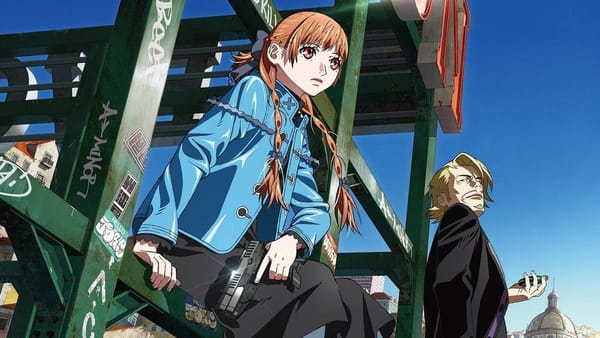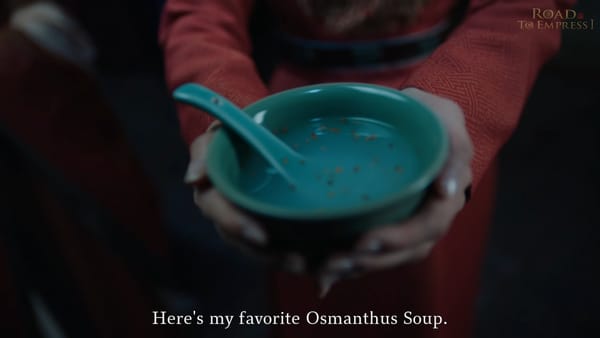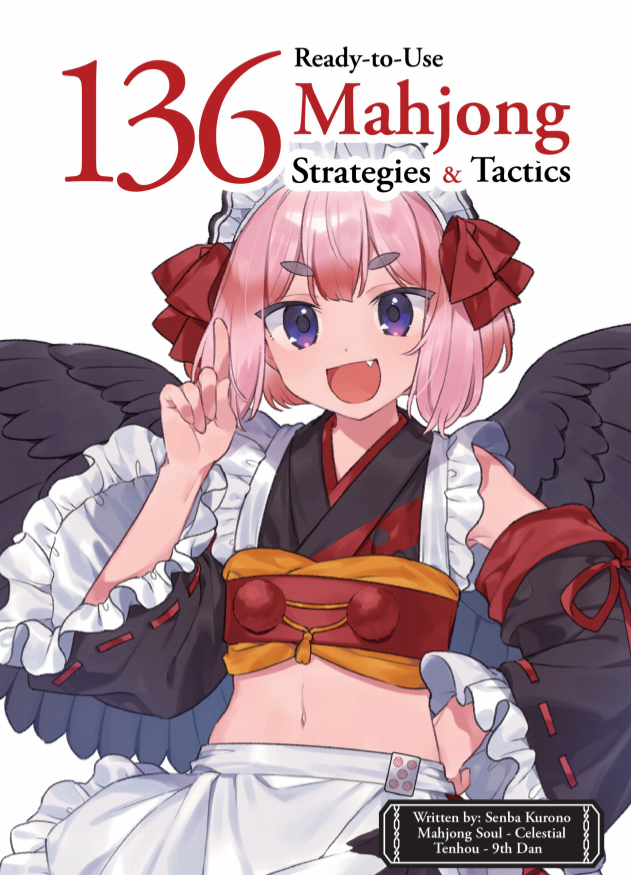I have too much to say about Otakon 2022 (2/2)
Continuing my coverage from part one.
Continuing my coverage from part one.
Studio Orange
The Studio Orange panel was a one-man presentation by the hard-working producer Yoshihiro Watanabe.
If you’re not familiar with Orange (Beastars, Land of the Lustrous), they’re the rare CG studio that picky 2D anime fans love, due to the great effort they go to imbue their 3D animation with the expressiveness of 2D.
The panel was a demonstration of Orange’s progress over the years, showing off exactly the kinds of tweaks and tricks Orange makes to their 3D to make their works so expressive. The running theme was the artists trying to work their way up towards full human expressiveness.
Starting with the rock-people of Land of the Lustrous, working with the animal-people of Beastars, experimenting with clothing and light effects in a music video for Idolish7, Watanabe took us step-by-step through the wizardry involved in stylizing 3D CG to look good to 2D animation fans. More than just skipping some frames or putting black lines on the edges, he presented us details that we wouldn’t have thought of ourselves, but which unconsciously sell us on the illusion.
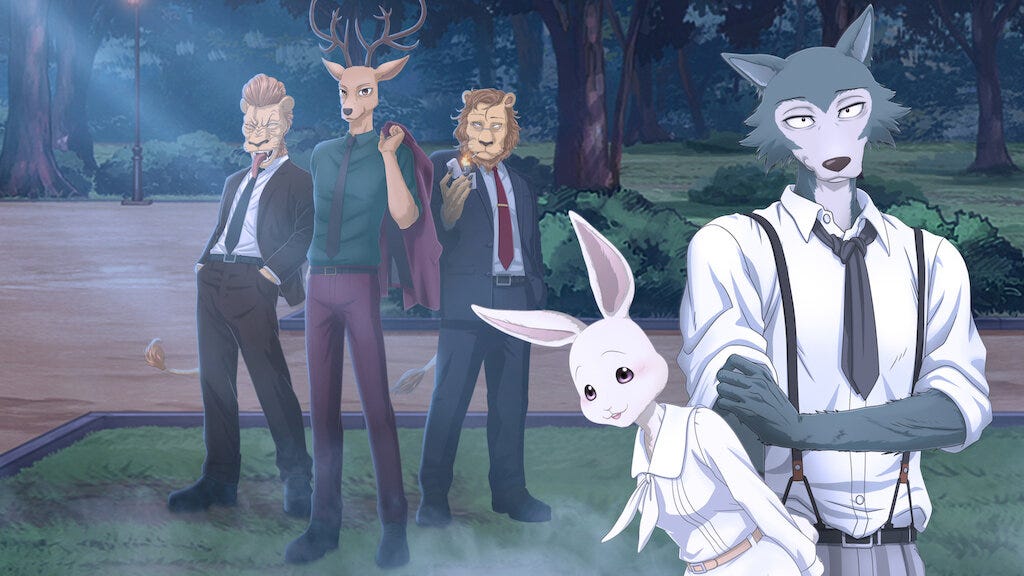
If you’re curious about Orange’s work, I’d strongly recommend Beastars on Netflix.
Game room
I always hit up the game rooms at cons, especially because lately they’re host to private arcade collections of retro and rarities.
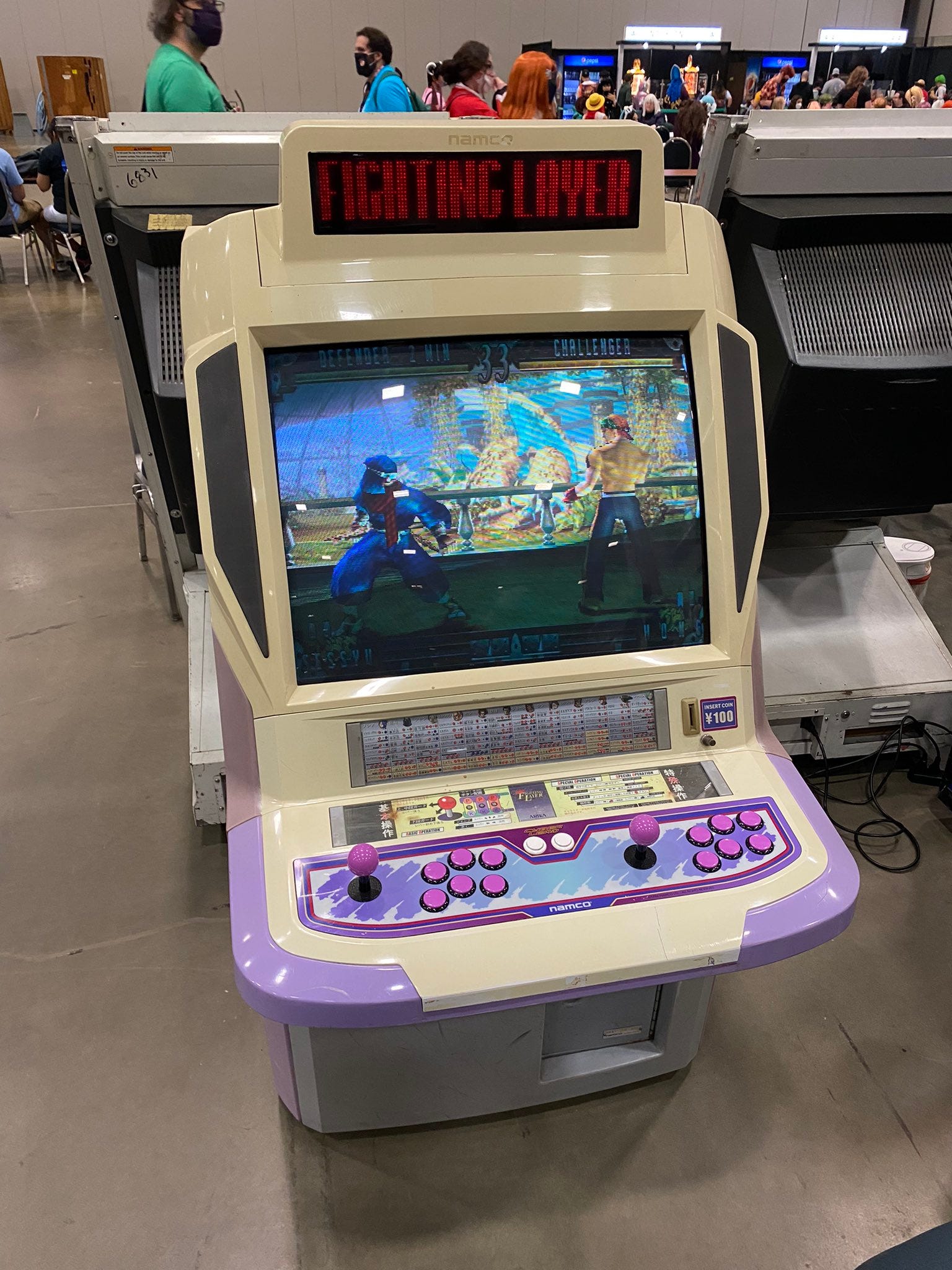
Take this Namco Cyber Lead cabinet playing Arika’s Fighting Layer (not Fighting EX Layer; the really weird one). The cool gimmick of the Cyber Lead was the red LED marquee. Various games were actually programmed to work directly with this marquee, displaying game information up top. Ahh, it’s cool!! Also got to try out a classic Neo Candy cab (from which the common “candy cabinet” name comes), among others.
It wasn’t just cool cabinets, but also the game selection was on point: I played through Elevator Action Returns with my buddy TomAznable in its entirety, and gatekept the masses with PatzPrime and botoggle in Gundam Extreme Vs.
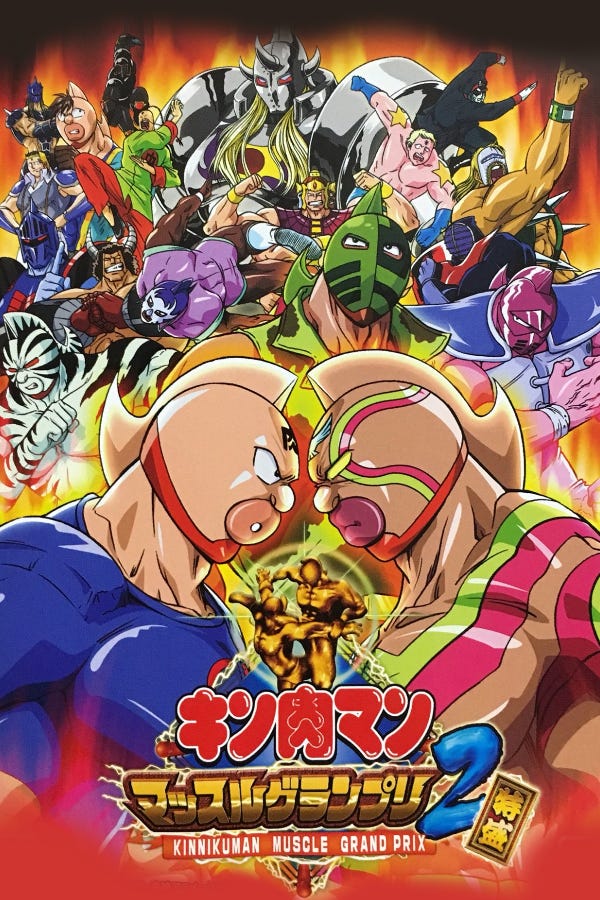
My personal “Game That Owns The Most Prize” goes to Kinnikuman Muscle Grand Prix 2. This is a fighting game by AKI (many 90s wrestling games before moving permanently to the Style Savvy and Pripara series) based on the Kinnikuman (aka Ultimate Muscle if you are old or M.U.S.C.L.E. if you are even older than that) wrestling manga and its bizarre cast of fighters.
There’s this one character that’s an alligator and also a sneaker and his name is Snigator. One guy is just a toilet. Another guy’s just a big mountain in a gi. Really, this game should be a massive hit.
Extremely distinct from standard fighting game tropes, Muscle Grand Prix takes the striking and grappling from a 3D fighter like Tekken, and removes all the complexity of high, mid, and low attacks. It’s an absolute brawl where the only defense is to block strikes and escape throws with well-timed button presses.
In the spirit of the wild kids’ gag comic that Kinnikuman is, the game borrows the concept of “super moves” from 2D fighting games and has a dedicated button for the characters’ many, many special moves.
It’s extremely unique, approachable and fun to pick up, and I had a great time playing the game with friends and random people alike.
I recommend picking up the final PS2 port, called Kinnikuman Muscle Grand Prix 2 Tokumori (meaning an extra large serving). I’ve been playing it quite a bit at home!
Mahjong panel
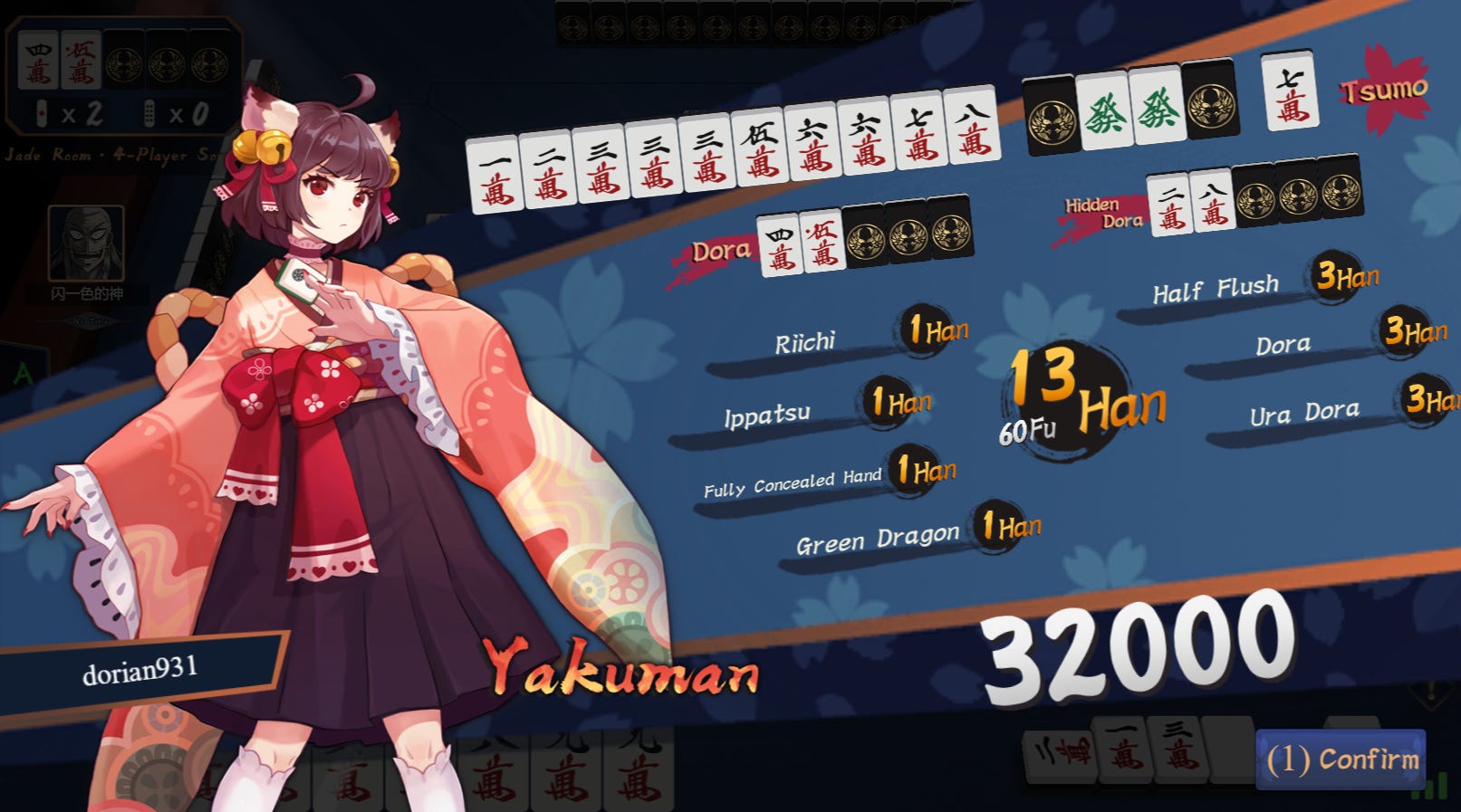
As you may have noticed from a previous post, Carl of Ogiue Maniax and I put on a panel about Japanese mahjong, ten years after we last did so. Realizing it had been ten years was quite a shock, and so we set out to put together an updated panel for a post-Mahjong-Soul world.
Our previous presentation was a very direct explanation of the rules of the game: ten years ago, there wasn’t a lot of clearly written tutorial material in English and you really had to bang your head against a wall to learn the game.
Today that’s no longer the case, so we pulled the view of the panel outwards a little bit, truncating our explanation of the rules and expanding our discussion of why riihi mahjong is interesting and exciting, as well as characters in mahjong anime/manga.

We managed to pack our room, which I’m rather proud of considering we were up against the Friday concert and gamer idol Kaho Shibuya selling energy drinks. We had one person— who wasn’t a personal friend of mine— who had actually been to the panel ten years ago as well!
Gunbuster dub
(Disclosure: this dub was produced by Brady Hartel, a con buddy and mutual on Twitter. However, I would never lie for a friend’s sake where something as important as Gunbuster is concerned.)
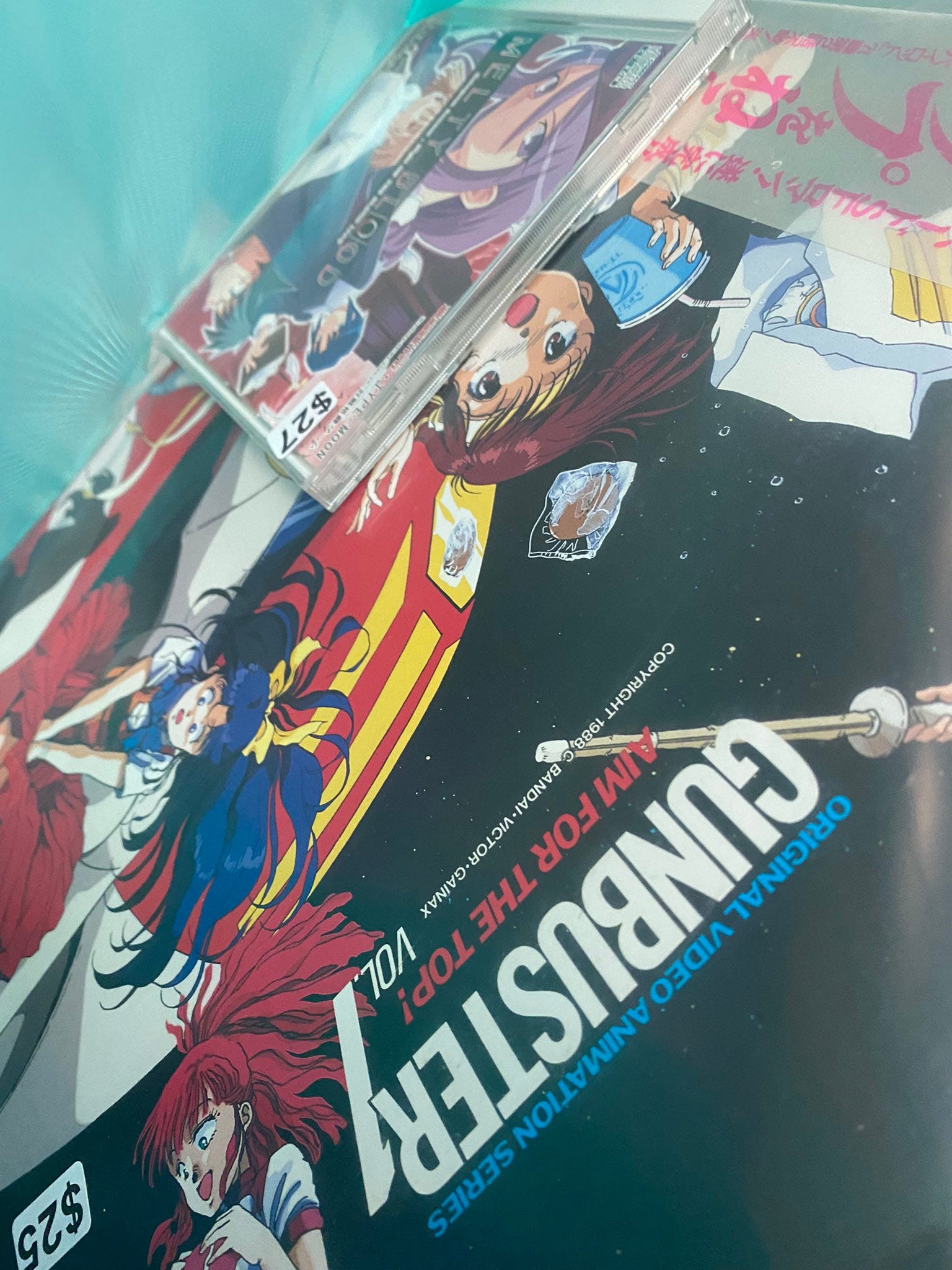
I checked in on the dub showing of my all-time favorite anime, Aim for the Top! - Gunbuster. I generally prefer watching stuff in its native language, but I was very curious about Gunbuster, which was both among the earliest anime to be officially released, unaltered, in English… and also never dubbed in the 30 years since. For the old anime fan, an English dub of Gunbuster is a real curiosity indeed.
And I’m happy to say they got it right. We watched the first two episodes, so most of the big moments lie ahead, but the bases are essentially covered. Noriko has the necessary range, from her moping and self-loathing to her cathartic hot-blooded battle screams. Coach is appropriately intense, and I really appreciated that Jung Freud speaks with an understated Russian accent rather than some overpowering Boris and Natasha stuff.
If you’ve never seen Gunbuster, please do by any means. Hideaki Anno’s directorial debut, which starts off as a sci-fi shoujo manga parody and escalates until it winds up somewhere deeply profound, is my forever favorite.
Discotek panel
(Disclosure: In addition to my general enthusiastic support of their work, I count beloved anime con personality and Discotek pitchman Mike Toole as a friend and of course I want them to succeed, I’m biased.)
mecha fans when discotek announces the standard definition blu-ray intergalactic defender linguini, the classic 80s mecha anime that lasted 43 episodes and has never been released on home video outside of japan, but does have a mostly lost dub that aired on ukraine public access:
— Cum the Forever (@baribaritune) 2:13 AM ∙ Jun 8, 2021
The Discotek panel at the anime con is where you go to live out this tweet with the hundred other robot anime nerds. It’s the best party in town, if you’re the right person for it.
The Discotek guys have assembled the Nintendo Direct of boutique, obscure anime-adjacent media on home video. Between updates on tentpole titles like Lupin III and City Hunter, they hit viewers with completely unguessable shock surprise licenses like Space Sheriff Gavan and Machine Robo: Battle Hackers, both of which elicited shock, joy, laughter and cheers from the veteran crowd.
There is so much excess excitement from a Discotek panel— especially as they make their biggest announcement in the very last moments of the panel— that half the room ends up crowded together outside the panel talking about how awesome it was. It’s really an amazing communal experience and I treasure it every year.
Sunday concert
When you go through the guest list at an anime convention, you should look up those people and see what they’ve done.
Case in point: Sunday’s concert was listed as “Kaoru Wada and Yuki Hayashi”, which it is. There was a respectable attendance, mostly frompeople who just wanted to see a concert.
However, it was apparent that Otakon couldn’t mention the composers’ works in the title— or even show images from those series in their visual aids-- because “Inuyasha/Haikyuu!!/My Hero Academia Concert” probably would have packed the house.
I have never actually sat down and watched Inuyasha, but I realized during this section of the concert that Kaoru Wada’s score was in the background radiation of my life all through the 2000s. I had heard it, and a lot. Those strings transported me.
Meanwhile Yuki Hayashi’s set was basically an anime battle rock concert. Even having watched a bit of Haikyuu, I was shocked that some of these extremely intense tracks were from a sports anime and not a fight to the death. Highlight was the lead violin shredding with the guitarist, always delightful to see.
In closing

Things always wind down in the hotel lobby. We share the stories of our weekends, we laugh, the conversation spirals off wildly, we laugh some more. Maybe we meet some new people in there, hear about something we’d never thought of. It’s really nice.
This kind of togetherness was hard to come by last year. Everyone kind of ducked in, did their thing, and then retreated. Everyone at the room party was a little guilty. It was difficult to justify doing much of anything when the danger was apparent and the attitude was so lax. Mind, that year produced zero Covid cases.
This year it’s arguably more dangerous out on the street, Covid-wise, but with an organization that did its due diligence and a population willing to comply with basic health practices1, visiting Otakon once again felt like traveling back in time: not to the 2000s, but to a time when it was okay to go to a big convention.
Both of which you can’t get in “real life” ↩

